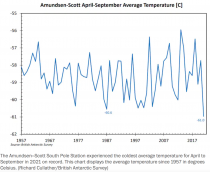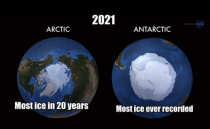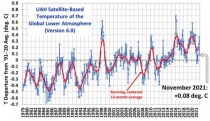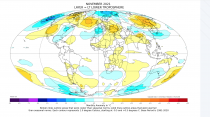New South Pole Winter Cold Record
The average temperature at the Amundsen-Scott South Pole Station between April and September, a frigid minus 78 degrees (minus 61 Celsius), was the coldest on record, dating back to 1957. This was 4.5 degrees lower than the most recent 30-year average at this remote station, which is operated by United States Antarctic Program and administered by the National Science Foundation. The chill was exceptional, even for the coldest location on the planet.
Several ships trapped in ice after Arctic sea freezes early near Russia
An early and unexpected freeze has trapped at least 18 cargo ships in the Arctic Sea off the coast of Russia. Ice up to 30cm thick has formed across most of the Laptev Sea and East Siberian seas, according to the Barents Sea Observer, a Norwegian news site.
That comes after Dr Paul Tepes, of the University of Edinburgh’s School of GeoSciences, said: “… As has been observed elsewhere in the world, ice loss in the region is accelerating. As the climate continues to warm, significant ice loss in the Russian Arctic will have clear impacts for sea level rise.”
The Antarctic Just had its coldest 6 months ever recorded.
In 2014 Nasa said Ice was the largest ever recorded. Ice at the Antarctic has only grown since then. Meanwhile Arctic Ice Is reaching its highest point in 20 years. According to the latest data from the Danish Meteorological Institute (DMI), Arctic sea ice ‘volume’ has been on something of a tear in recent weeks - it is now tracking above all recent years and shows no signs of abating. It may hit a 30 year record before warmer weather hits…
It was a very cold November 2021 in Alaska:
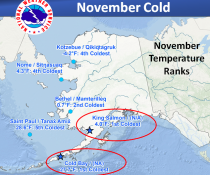
Enlarged
And now there is a blizzard warning in Hawaii for winds exceeding 100 mph.
Heavy Snows are falling in Europe.
This is just as it did last winter and spring. Here is how they spun it by attacking ‘deniers’ here. It is concerning because it is happening again as they are removing nuclear plants.
We often hear about the dangers of heat. But research shows cold is far more deadly than heat (10x more in Brazil, 20X more in South Africa. The authors estimate in 2019, “the average cold-attributable mortality exceeded heat-attributable mortality in all countries for which data were available.” Cold effects were most pronounced in China and in New Zealand.
Meanwhile, the UAH Version 6.0 global average lower tropospheric temperature (LT) anomaly for November, 2021 was +0.08 deg. C, down substantially from the October, 2021 value of +0.37 deg. C. This is consistent with the La Nina rebound.



